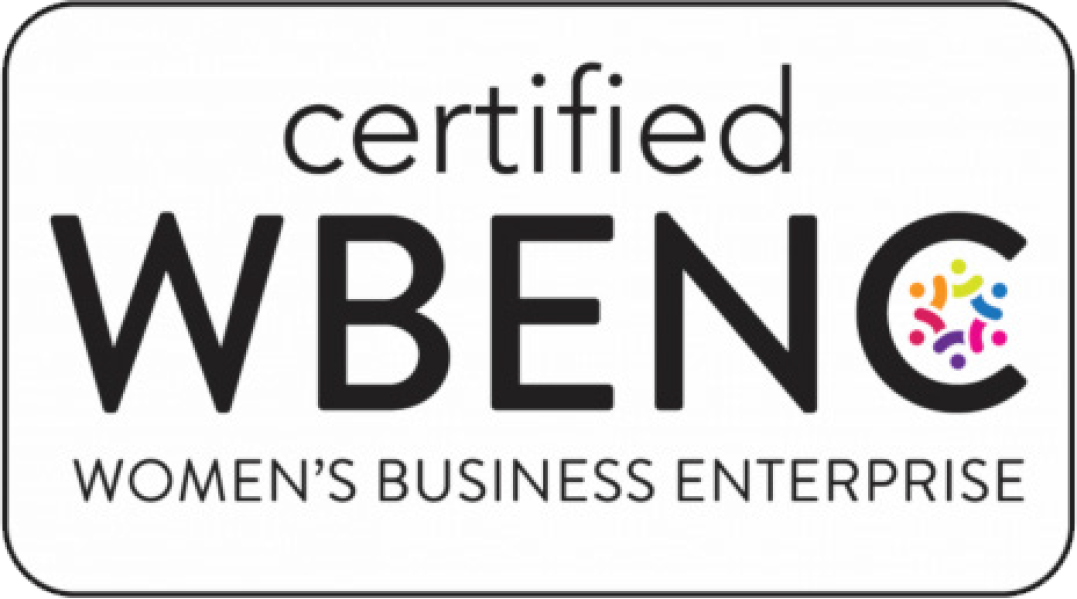Why is finding – and keeping – talent still such a struggle?
The problem may not just be with more selective applicants, how your benefits compare or even the red tape of your company’s hiring process.
(Those are problems, sure, but maybe not ones that are easily fixable.)
Instead, one (frustratingly) simple solution may be in the words your team is using.
Communicating inclusively can make a vital difference in how your company is perceived by both potential and current employees. That means keeping your audience and their needs in mind and then writing strategically to reach them.
Step 1: Write inclusive job postings
By now, diversity is more than something that’s valued: It’s expected. Yet, it’s easy for non-inclusive language to creep into your descriptions of your company’s open positions, unless you’re actively paying attention.
A good place to start is this easy move:
Avoid gendered language – eliminating descriptors traditionally considered male or female. That means not using potentially loaded words such as ‘outspoken’ or ‘compassionate’. These may cause potential candidates to rule themselves out.
Other easy places for change: Eliminate words and phrases like ‘digital native’ or ‘mature’ that may imply a candidate’s age.
Also, communicate a range of benefits by using inclusive language.
Paid parental leave, diversity training, tuition reimbursement and paid time off for religious holidays all are important to some candidates and deserve mention.
Simple words are good
One not-so-obvious way to improve your job postings is by making them easier to understand by neurodiverse people and non-native speakers. Use simple, direct language. Use short sentences. Define acronyms, if you must use them.
Simple, easy-to-read copy works for everybody.
Also, break segments up with headers
This works in just about every instance of business writing, but it makes the good stuff stand out to your potential employees.
Knowing which words to include and avoid in your job postings is a full article unto itself.
That’s why we recommend you check out this Indeed article next for more specific tips on language.
Step 2: Communicate your culture
Your job postings are often the first impression many people have of your company. Next, they’ll check you out on social media.
So take every opportunity to convey what it’s like to work at your company with people *outside* the company. Do you really live your corporate values? Show – and tell – that in your social content.
For instance, if you recently enhanced your company’s diversity & inclusion program, talk about it on social media. That will resonate with people who are looking for more than just a paycheck from their work.
Share stories about how your company is making a positive impact. Create a social series showing your company benefits. Amplify other voices.
It might seem obvious, but too often, this kind of important internal messaging never makes it into the great wide open … where your future employees live.
Convey your brand
Does your company actually walk the walk? Then talk about it.
If you were looking for a job at say, Patagonia, you’ll be very interested in hearing more about their paid field days for outdoor adventures.
Words like “innovative” and “inclusive” and “collaborative” tell job seekers a lot about what it will be like to work with your company. They help them decide if the two of you will really be happy together.
Step 3: Write for keeps
And, finally, keeping talent is just as important as hiring it.
Make sure current employees are receiving transparent and positive communication on all topics — and receiving it regularly.
It’s about people
When you’re talking to or about employees, avoid using gender-specific words.
Use “they” or “them” instead of “she” or “he” — or use people’s names. Make sure your words don’t unconsciously excuse any group.
Celebrate your team’s diversity by recognizing cultural events. Look for ways to share the stories and experiences of employees from a variety of backgrounds and perspectives.
Make it accessible
One issue we see even in large corporations is communications aren’t accessible to everyone.
Videos should have captioning for hearing-impaired team members. Translation services may need to be offered. Digital content must meet ADA standards.
And don’t forget, this isn’t a one-and-done practice.
Inclusivity takes continual effort. Be sure to regularly review and update your communications to make sure they remain inclusive and reflect current sensibilities.
Need help?
We work closely with internal communications teams all over the world. We’re happy to share best practices, support your writing and internal comms needs and help you audit your communications practices to get – and keep – great talent.
Email WordsFresh president Mary Pat Nimon to discuss.
Why is finding – and keeping – talent still such a struggle?
The problem may not just be with more selective applicants, how your benefits compare or even the red tape of your company’s hiring process.
(Those are problems, sure, but maybe not ones that are easily fixable.)
Instead, one (frustratingly) simple solution may be in the words your team is using.
Communicating inclusively can make a vital difference in how your company is perceived by both potential and current employees. That means keeping your audience and their needs in mind and then writing strategically to reach them.
Step 1: Write inclusive job postings
By now, diversity is more than something that’s valued: It’s expected. Yet, it’s easy for non-inclusive language to creep into your descriptions of your company’s open positions, unless you’re actively paying attention.
A good place to start is this easy move:
Avoid gendered language – eliminating descriptors traditionally considered male or female. That means not using potentially loaded words such as ‘outspoken’ or ‘compassionate’. These may cause potential candidates to rule themselves out.
Other easy places for change: Eliminate words and phrases like ‘digital native’ or ‘mature’ that may imply a candidate’s age.
Also, communicate a range of benefits by using inclusive language.
Paid parental leave, diversity training, tuition reimbursement and paid time off for religious holidays all are important to some candidates and deserve mention.
Simple words are good
One not-so-obvious way to improve your job postings is by making them easier to understand by neurodiverse people and non-native speakers. Use simple, direct language. Use short sentences. Define acronyms, if you must use them.
Simple, easy-to-read copy works for everybody.
Also, break segments up with headers
This works in just about every instance of business writing, but it makes the good stuff stand out to your potential employees.
Knowing which words to include and avoid in your job postings is a full article unto itself.
That’s why we recommend you check out this Indeed article next for more specific tips on language.
Step 2: Communicate your culture
Your job postings are often the first impression many people have of your company. Next, they’ll check you out on social media.
So take every opportunity to convey what it’s like to work at your company with people *outside* the company. Do you really live your corporate values? Show – and tell – that in your social content.
For instance, if you recently enhanced your company’s diversity & inclusion program, talk about it on social media. That will resonate with people who are looking for more than just a paycheck from their work.
Share stories about how your company is making a positive impact. Create a social series showing your company benefits. Amplify other voices.
It might seem obvious, but too often, this kind of important internal messaging never makes it into the great wide open … where your future employees live.
Convey your brand
Does your company actually walk the walk? Then talk about it.
If you were looking for a job at say, Patagonia, you’ll be very interested in hearing more about their paid field days for outdoor adventures.
Words like “innovative” and “inclusive” and “collaborative” tell job seekers a lot about what it will be like to work with your company. They help them decide if the two of you will really be happy together.
Step 3: Write for keeps
And, finally, keeping talent is just as important as hiring it.
Make sure current employees are receiving transparent and positive communication on all topics — and receiving it regularly.
It’s about people
When you’re talking to or about employees, avoid using gender-specific words.
Use “they” or “them” instead of “she” or “he” — or use people’s names. Make sure your words don’t unconsciously excuse any group.
Celebrate your team’s diversity by recognizing cultural events. Look for ways to share the stories and experiences of employees from a variety of backgrounds and perspectives.
Make it accessible
One issue we see even in large corporations is communications aren’t accessible to everyone.
Videos should have captioning for hearing-impaired team members. Translation services may need to be offered. Digital content must meet ADA standards.
And don’t forget, this isn’t a one-and-done practice.
Inclusivity takes continual effort. Be sure to regularly review and update your communications to make sure they remain inclusive and reflect current sensibilities.
Need help?
We work closely with internal communications teams all over the world. We’re happy to share best practices, support your writing and internal comms needs and help you audit your communications practices to get – and keep – great talent.
Email WordsFresh president Mary Pat Nimon to discuss.
 SUBSCRIBE TO
SUBSCRIBE TO
Three fresh ideas (and a meme)
Love what you just read? There’s more! Sign up for our monthly newsletter for even more thought-provoking ideas (and reasons to LOL).


